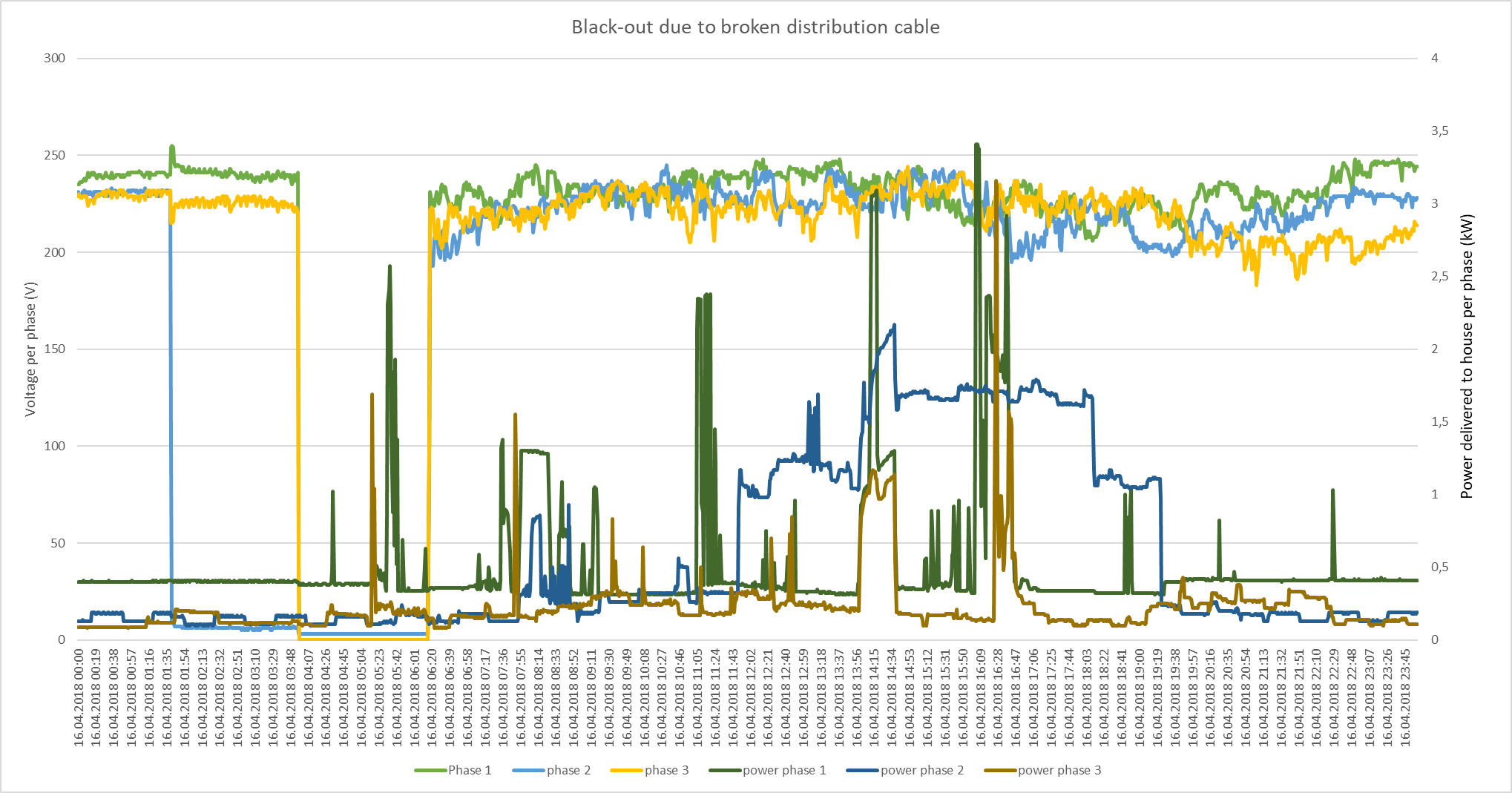Black out on the residential grid of our STORY demonstration

On April 16th there was a black out on the residential grid of our STORY demonstration. One phase dropped out first, followed by the two others 2 hours later. The figure below reveals the details of this early morning black out. The right axis shows the power provision to the Living Lab, connected on batteries. You see no interruption on any of the phases. A smooth transition process in both directions: from on-grid to off-grid and back again. Later in the evening you see another typical occurrence for low voltage distribution grids in areas with increased electric demand: the voltage on phase 3 drops below 200 V and remains low several hours. At the same time there is room on the other 2 phases. Such data reveals a lot: – local grids often deliver poor power quality – local battery systems, whether at building or at neighbourhood level, can contribute to grid stability and ensure phase balancing when well designed – safety issues are a key factor of attention. The below 2 phase electricity supply to 3-phase buildings should not have happened. Again something where qualitative battery systems could prevent damage. Remuneration schemes for provision of low voltage services are key in ensuring investments where and when needed.
